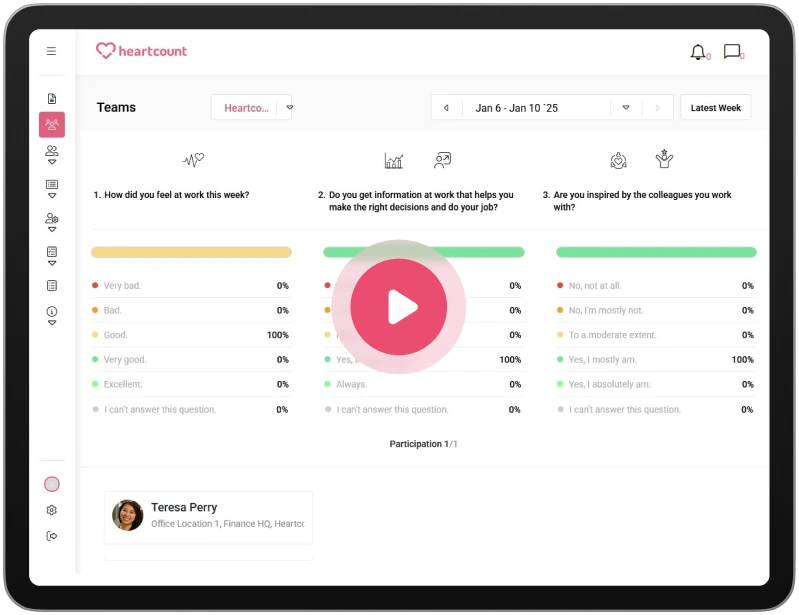12 employee engagement ideas by employees

Have you experienced a scenario where a new hire joins your company full of enthusiasm, ideas, and energy but then loses steam over time?
Many companies have trouble keeping their employees engaged and motivated. A disengaged employee means lower productivity, performance issues, and high absenteeism rates.
Have you experienced a scenario where a new hire joins your company full of enthusiasm, ideas, and energy but then loses steam over time?
Many companies have trouble keeping their employees engaged and motivated. A disengaged employee means lower productivity, performance issues, and high absenteeism rates.
Top employee engagement ideas for 2024
How do you keep your team motivated, productive, and genuinely invested in their work and the company’s success?
Measuring employee engagement can offer invaluable insights into your workforce’s overall happiness, satisfaction, and morale.
Yet, the real challenge is not just measuring engagement but actively enhancing it.
1. Make employees feel welcome from their first day
A welcoming start can lead to long-term engagement, improve retention rate, and foster a positive work environment. Employees who feel welcomed and valued are more loyal to the team and the company. They are more motivated to contribute and more likely to have higher job satisfaction.
To welcome a new employee, provide:
- Personalized welcome
Gestures like a welcome note signed by the team or a small gift make a big difference in making the new employee feel valued.
- Effective onboarding
Effective onboarding increases new hire retention by 82% and productivity by over 70%. Ensure your onboarding is well-organized and informative. It should include role-specific information and an introduction to company culture and values. - Buddy system
Pair a new hire with a more experienced colleague who can support and help the new employee within their first few months at the company. - Regular check-ins
Schedule one-on-one meetings where new employees can discuss concerns and give the manager a chance to offer feedback and guidance.
For example, Netfilx’s culture focuses on employees as they step into the company. The organization follows a “welcome home” approach that encourages employees to feel secure and trust their managers.
Netfilx ensures that new hires have all the necessities for a smooth transition. According to the latest filings, they have 12,800 employees.
2. Discuss job expectations
According to Gallup’s State of American Workplace Report, over 25% of employees stated they did not have enough details about their employment before accepting the offer. The report is based on data collected from 195.600 employees in the United States.
An open dialogue helps eliminate confusion about job responsibilities and assumptions. Moreover, it highlights discrepancies between the employee’s and the manager’s expectations.
When employees can articulate their roles and responsibilities, they take greater ownership of their tasks.
What’s more, when they understand what is expected of them, they are more inclined to participate in their professional development.
This proactive approach increases employee engagement and productivity and contributes to the company’s success.
Try using the following approaches when discussing their role with an employee:
- One-on-one meetings
Schedule regular individual sessions with every team member to discuss job expectations.
- Ask open-ended questions
Encourage employees to describe their roles in their own words. Ask open-ended questions like, “How do you see your role evolving?” or “What part of your job do you feel has the most impact?”
- Actionable follow-up
Don’t stop at just having a discussion. Follow up on your conversation by making adjustments to responsibilities, workload, and deadlines.
- Align and refresh incentives
Work with your employees to set clear goals and targets, after which they can be rewarded with a bonus or another incentive. It will contribute to their motivation.
3. Include employees in decision-making processes
One of the most effective employee engagement ideas is to involve your employees in decision-making processes.
Employees feel valued and respected when their opinions are sought and considered. If they can influence the company’s direction and success, employee satisfaction significantly increases.
Involvement fosters a positive company culture where employees are eager to contribute. This leads to higher productivity and innovation.
Involve employees in decision-making through:
- Transparent communication
Share the topics for debate and the scope of the decision-making process, preferably on a team level. Ensure every team member understands how the management uses their feedback and makes decisions. - Diverse committees
Create working groups with employees from different departments. It ensures multiple perspectives and expertise in decision-making. - Suggestion systems
Provide multiple ways for employees to submit ideas or suggestions. This could include a digital suggestion box, regular brainstorming sessions, or idea management software. - Recognition and feedback:
Acknowledge your employees’ contributions and provide feedback on how their input was used.
Harvard Business School Professor Len Schlesinger highlighted the importance of involving relevant people in decision-making. He advised leaders to map out all the technical, political, and cultural aspects of the decision that needs to be made and then build a group of people accordingly. All those people have different backgrounds, knowledge, and experiences, so this team’s decision-making will only benefit the organization.
4. Make regular feedback loops a must
Employee feedback can provide insights into the organization’s daily operations and culture, revealing strengths and areas needing improvement.
A company that values feedback shows transparency and builds trust. Moreover, it demonstrates that every voice matters and is taken seriously.
At the same time, your employees should receive frequent feedback on their work to keep improving every day.
To collect the feedback from your employees, use:
- Proper tools
With tools like HeartCount, you can easily do a weekly pulse check. These are short, frequent employee engagement surveys that collect feedback on various topics.
Another great benefit of these surveys is that they are less time-consuming and provide immediate insights. They also provide an anonymity option to get honest and constructive feedback.
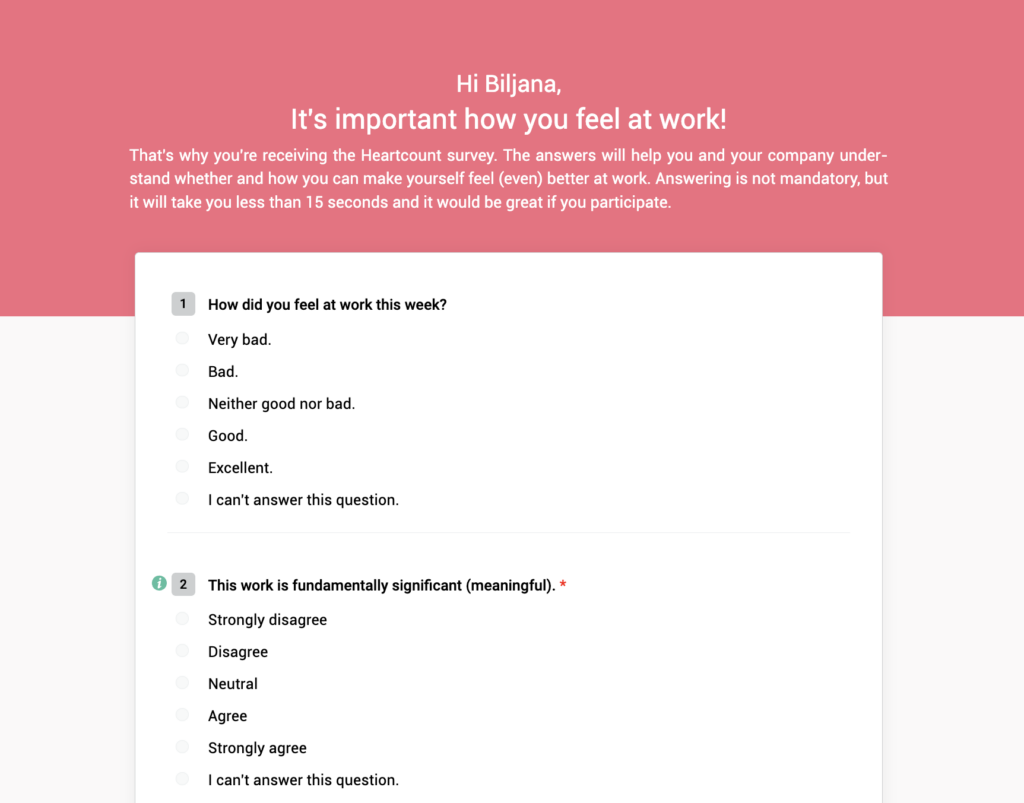
- Act on feedback
Collecting feedback alone isn’t enough. It’s crucial to act on it. Share the feedback outcomes with your employees, explain your decisions, and involve them in creating the solution whenever possible.
Negative pulse check results can signal your employee is preparing to quit. So, react promptly to prevent losing a valuable asset to your team and company. - Open-door policy
Encourage leaders to be approachable so that employees feel comfortable sharing feedback directly. Educate managers on how to deliver and receive feedback.
Clear, kind, and timely feedback works best in the long run.
For example, Bright! Tax management didn’t have a regular meeting rhythm with their team members. Over time, as the company grew, the lack of communication structure created chaos.
They introduced the daily huddle to identify small problems and built-in space for questions & collaborative problem-solving.
Moreover, they have adopted Brene Brown’s principle that “clear is kind.” This means that they don’t shy away from tough conversations but always deliver feedback with clarity: what’s been done well, what should be improved, and how the employee can get there.
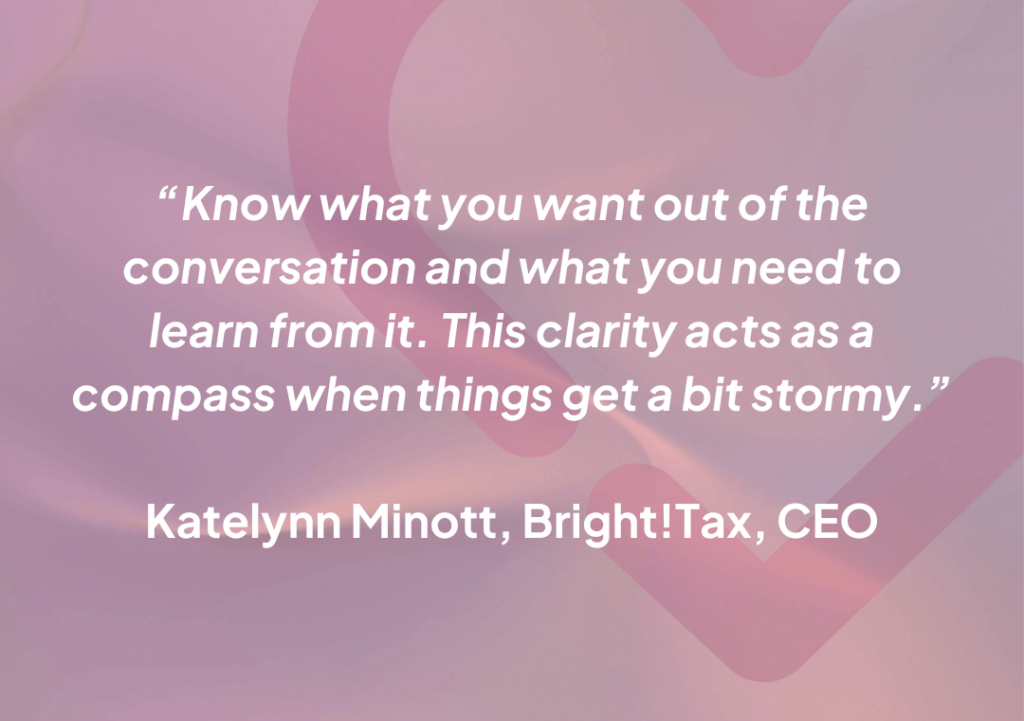
5. Celebrate milestones
Celebrating milestones improves employee performance. Recognition fulfills a fundamental human need for appreciation and belonging. It also drives loyalty and a strong, positive workplace culture. Celebrated and recognized employees are more efficient and inclined to stay with the organization.
Celebrate milestones with:
- Personalized celebrations
Understand what type of recognition is most meaningful to each employee or team. Public recognition is most impactful for some, while others may prefer a private note of appreciation.
With HeartCount, you can easily practice public recognition for your employees.

- Timely recognitions
To maximize the impact of the recognition, celebrate milestones soon after they are achieved, no matter how big or small they are.
Don’t wait for a perfect occasion—send them a private message on Slack or email, and celebrate the win on the team channel or the company’s wall on HeartCount.
Later on, you can organize a celebration venue if the milestones are huge.
- Everyone included
Ensure that celebrations acknowledge all those who contributed to the success. This fosters a sense of teamwork and collective achievement.
Tools can also help celebrate milestones. Milos Milosavljevic, HeartCount’s product marketing lead, suggests:
“One of HearCount’s best features is definitely “Praise,” which allows me to acknowledge and highlight the work and contributions of colleagues from my own team and those of other teams directly. As a manager, Praise also helps me better understand the relationships between colleagues.”
Hearing a “Well done!” from someone at the top, like the CEO, can significantly boost morale and employee engagement.
At NetApp, Tom Mendoza, the Vice Chairman, personally thanks employees. He asks managers to inform him whenever an employee notably excels. Then, personally calls and expresses gratitude to 10 to 20 employees daily.
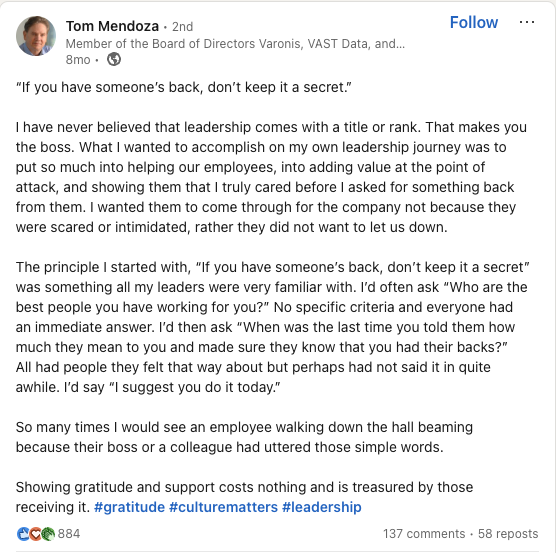
6. Respect work-life balance boundaries
Employees have lives outside of work, and their time off is just as important as their time on the job. Overworking can lead to burnout, reduced productivity, and an increased probability of quitting. On the other hand, well-rested employees are more productive, creative, and effective. Respecting work-life balance helps maintain employee well-being and long-term engagement.
Good work-life balance practices include:
- Clear expectations
Ensure managers understand and embody the organization’s stance on work-life balance.
- Flexible work arrangements
Offer flexible working hours, remote work options, or compressed work weeks. This will accommodate different lifestyles and responsibilities.
- Encouraging time off
Ensure that time off is not stigmatized and encourage employees to take their allotted vacation time.
- Monitoring workloads
Review employee workloads to ensure they are reasonable. Offer support or adjustments when necessary.
- Leading by example
Leadership should model work-life balance by setting boundaries for themselves and respecting the boundaries of others.
Airbnb, for instance, rewards employees with $2000 worth of travel coupons each year.
Ensuring employees have opportunities to rest and recharge contributes to maintaining a happy and healthy workforce.
7. Ask employees to suggest rewards for their achievements
Use an employee survey to discover what incentives your team members expect.
Employees who choose meaningful rewards are more likely to strive for excellence. Personalized rewards motivate individuals and inspire the rest of the workforce.
Moreover, rewarding employees shows that the organization cares about their preferences and well-being, boosting morale and job satisfaction.
To get useful and effective suggestions:
- Set clear guidelines
Offer choices, but ensure clear guidelines for a reasonable reward.
- Provide diverse options
Provide various options to cater to different preferences. Some choices include extra time off, professional development opportunities, gift cards, public recognition, or team outings.
- Collect regular feedback
Adjust the options based on what employees find most valuable.
While incentives typically reward continued employment and achievements, Zappos took an unconventional approach.
Under Tony Hsieh’s leadership, the company introduced “The Offer,” a unique program that paid employees to quit.
This program gave new hires a cash bonus if they decided within the first four weeks that the job wasn’t for them. The quitting bonus started at $100 and went up to $2,000. The goal was to ensure that only the hires who were truly happy and committed to the company would stay.
This resulted in a more satisfied and productive team. The approach shows employers reap benefits from being creative about employee engagement practices.
With HeartCount, you can gather employee feedback through customized surveys. You can tailor questions and timing and select specific employees. All your surveys can be saved as templates so that you can reuse them effortlessly.
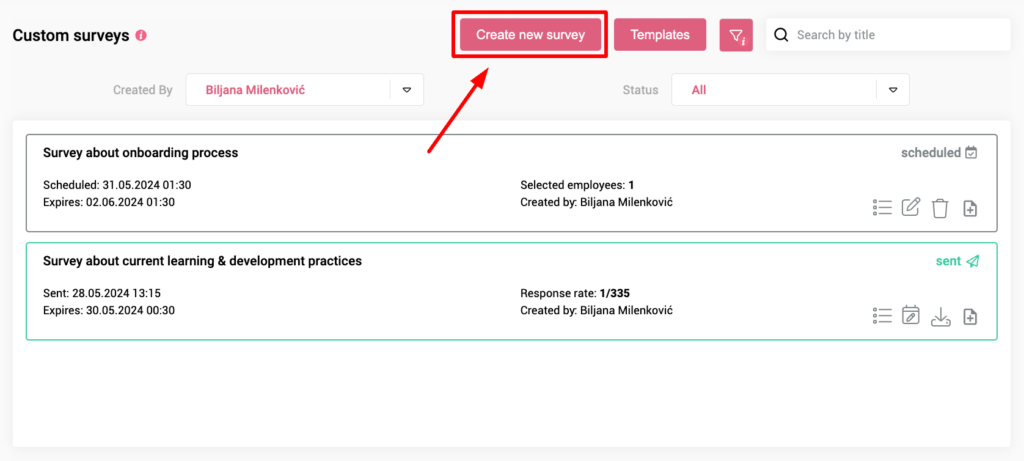
8. Invest in your people
Employee development is an investment, not an expense. Yet 59% of employees report that the company didn’t invest in their training.
Investing in professional development ensures your team’s skills remain relevant and competitive in a rapidly changing market. Well-trained employees are more likely to generate innovative ideas to drive the company forward.
Employee turnover is lower in companies that value their employees and invest in their growth.
Companies that invest in their people also attract high-caliber candidates who are looking for workplaces that support their professional development.
Invest in your people by offering:
- Professional development programs
Offer training, workshops, seminars, or access to online courses that help employees improve their skills and advance in their careers.
- Mentorship and coaching
Establish mentorship programs where employees can learn from experienced colleagues. External coaching can also contribute to personal and professional development.
- Clear pathways for advancement
Show your employees a clear career path within the organization and provide the support they need to progress.
- Well-being programs
Invest in programs that support your employees’ physical, mental, and emotional well-being.
DreamWorks, a top-notch animation studio, encourages employees to be creative by allowing them to participate in various art-related activities. It includes art shows, craft fairs, movie nights, art classes, and creative workshops. This variety helps inspire employees and keeps their creative skills sharp.
9. Organize team-building activities
Team-building activities help dissolve barriers between teammates, encouraging open communication and collaboration. Shared experiences outside the regular work tasks can also build trust among team members.
Furthermore, team-building activities can be fun and engaging and provide a refreshing break from routine work. They can also reduce stress and prevent burnout.
Organize team buildings:
- During the workweek
Show that the organization values these activities without infringing on personal time.
- Variety in activities
Offer various activities, such as brain teasers, physical challenges, or creative tasks, that cater to different interests and abilities.
- Regular schedule
Team-building activities can be monthly or quarterly events. Ensure they’re something the team looks forward to and can plan around.
- Involve everyone
Ensure that activities are inclusive and consider all team members’ preferences, abilities, and comfort levels.
- Reflect and debrief
Discuss what the team learned, how individual team members worked together, and how these insights can be applied in the workplace.
One analysis, which included about 1,390 medical teams from 31 different studies, showed that teamwork positively affects clinical performance. The study found that maintaining and improving teamwork benefits healthcare patients.
Translated to the language of any other industry, building teamwork among your team members will improve performance and customer satisfaction.
10. Encourage employees to connect
Connections among employees create a supportive network, advice, or simply a listening ear when needed. When employees understand each other, they are more likely to collaborate.
Employees who feel connected to their colleagues are generally more engaged and satisfied with their job. These relationships are an important part of the workplace experience.
Encourage employee interactions through:
- Social events
Organize team lunches, coffee breaks, or after-work gatherings to provide informal spaces for employees to connect.
- Interest-based groups
Encourage the formation of book clubs, sports teams, or volunteer groups where employees can bond over shared interests.
- Collaboration tools
Utilize collaboration tools and platforms that facilitate communication and project teamwork. This will encourage employees to connect and engage digitally.
- Team projects
Create projects or committees that require collaboration across different departments. This approach will encourage employees to interact with colleagues they might not typically work with.
A Deloitte report found that workers are 17% more satisfied with their workplace culture when they have access to effective digital collaboration tools. The research surveyed 3.600 employees from major European organizations.
As the chart below shows, German workers are least likely to recognize the benefits of digital collaboration tools, while Italians perceive these tools as beneficial.
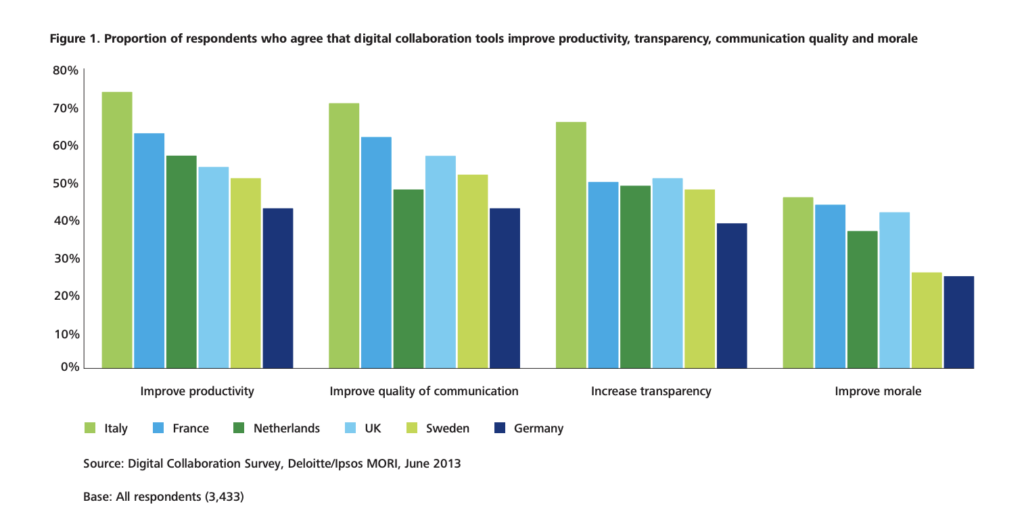
11. Ease work with tools and technologies
77% of employees think simple access to information helps them stay efficient and engaged at work.
Similarly, having the right tools can automate repetitive tasks and streamline processes. Tools reduce the time and effort required to get work done, enabling employees to find new ways to solve problems faster.
Employees feel more satisfied and less stressed when they have the necessary resources.
To provide employees with all the necessary tools:
- Assess their needs
Regularly consult your team to understand their challenges and identify helpful tools or technologies.
- Offer training and support
When introducing new tools, provide training and ongoing support to ensure all employees can use them effectively.
- Integrate tools
Ensure your tools are well-integrated. This will minimize switching between different platforms and allow for a smoother workflow.
Research conducted by OnePoll, which included over 2000 workers in the United States, found that they lose almost a full day of work per week to find the information they need.
The same research indicated that 76% of employees are happier in the workplace, where they can find information without asking questions.
12. Support a flexible work model
Employees who can work from anywhere and choose their working hours feel trusted and respected. This leads to higher job satisfaction and commitment.
Flexibility reduces stress, increases productivity, and fosters a positive work culture.
Provide a hybrid work model with the following:
- Clear policies
Define eligible roles, expected in-office days, and any core hours during which your employees should be available.
- Reliable technology
Ensure your employees have the tools and resources to be productive from any location.
- Regular check-ins
Implement virtual meetings to ensure remote employees are engaged with their teams.
- Focus on outcomes
Shift the focus from hours worked to outcomes and productivity.
- Foster inclusion
Take care of remote employee engagement as well. Ensure the remote team has equal access to information and opportunities for collaboration and career advancement.
Glassdoor named Bain & Company one of the “Best Places to Work” in 2024. The company has been recognized for its exceptional workplace environment and practices.
A key component of their approach to creating a positive work culture is offering flexible working conditions. This includes flexible hours, hybrid and remote work options, and more.
Another great example is Buffer. The company covers up to $200 worth of beverages and snacks for employees who prefer working from cafes instead of co-working spaces.
Leverage technology to improve employee engagement
Implementing these ideas can establish a foundation for a dynamic work environment.
To truly elevate your team’s potential, you must understand individual and team needs, and to do that, you need timely and accurate data.
Collecting information that can fuel your decisions and choices can be a nightmare without an effective tool to measure and analyze, employee feedback in real-time.
With features like weekly pulse checks, predictive turnover analytics, and timely notifications about employees at risk of leaving, HeartCount would ensure you’re always ahead of the curve.





